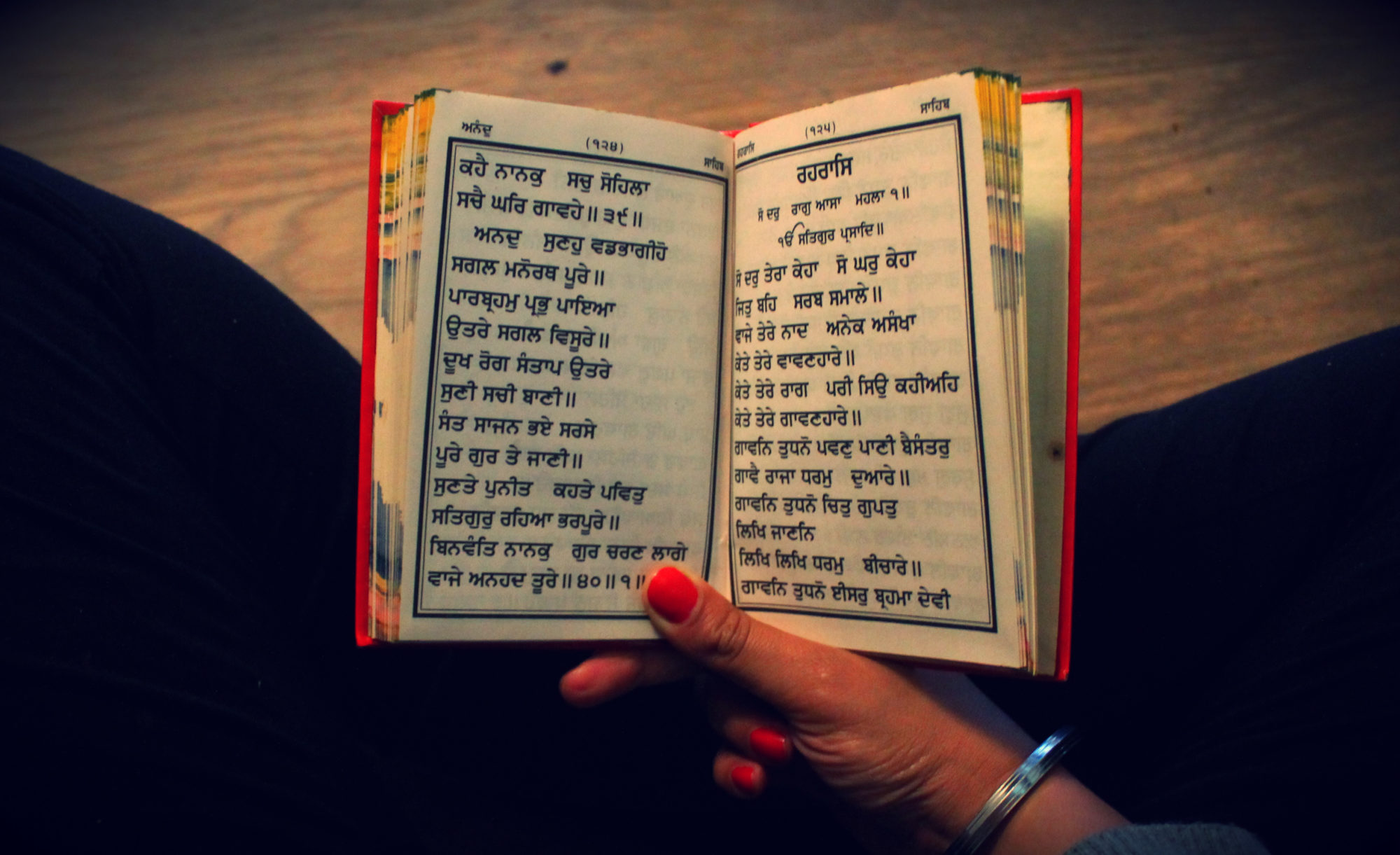Often when thinking about immigration issues or undocumented peoples in the United States, images of Syrian refugees or Mexican migrants come to mind. Very few people think of the Sikhs and Punjabis affected by US immigration policy. But recently, the number of Indian nationals arrested trying to cross the southern border into the U.S. has spiked and grown sixfold in the past 200 years. According to U.S. Immigration and Customs Enforcement (ICE), the number of Indians “removed” continues to increase with each passing year, which is likely due to harsher immigration policies being enforced, even with President Obama.
Seva
Amongst these groups of undocumented Indian immigrants is a significant population of Sikhs. In an attempt to connect with Sikhs in detention centers, a small group of Sikhs made a trip to a detention center in southern California in early November. The group visited with over 300 detainees, many of whom were Sikh males from Punjab. The group also met with 20 women – a mixed group of Sikh/Punjabis, Gujaratis, and Sri Lankans, reported volunteer Anonymous Kaur.
“I wanted to get a better sense of how I could be a more vocal advocate for these individuals who are both silenced by the US immigration system, as well as forgotten by our community,” said volunteer Harleen Kaur. “I hope to use my access and privilege in the community to shine a better light on these issues and force the Sikh community, or at least the portions of it that I interact with, to do better when it comes to immigration as a personal, political, and policy issue.”
While the volunteers did not have a specific agenda, Harleen said she hopes they were able to provide the detainees with resources, the opportunity to share their stories, and a chance to connect with people who may be sympathetic to their plight.
“I don’t quite know what mission Vaheguru has for us in doing this seva,” said Harleen. “But, I hope we are able to keep gurmat central to our work and remove any manmat as we attempt to find some sort of justice in a timely fashion for these members of our community.”
While there, the volunteers distributed approved donations such as paperback gutkay, Punjabi newspapers, Sikh history books, clothing, and thaans of dastaars. They also conducted an outdoor divan where the sevadars and detainees did simran, paat, kirtan, dharmik geet, ardaas, and jaikaray together, said Anonymous Kaur.
The duration of imprisonment for the detainees ranged from a few weeks to, in one case, 18 months. Many have had limited to no contact with their families in India. Compared to prior generations emigrating from India, many of these detainees face harsher economic situations in Punjab coupled with fewer immigration privileges. For instance some families today pay up to $30,000 (while other sources say $60,000) for an illegal, treacherous, and sometimes deadly, passage from Punjab to the United States, reported Texas-based immigration attorney John Lawit. For those whom legal options are untenable, the passage is often organized by human-smuggling networks with agents operating in rural Punjab. “They go from village to village recruiting people,” he said.
Conversations in Sikh Communities
Despite the large numbers of Punjabis and Sikhs entering the United States via Mexico, the conversation surrounding illegal immigration is often nonexistent or negative within the Sikh American community.
“I’ve always struggled with the lack of conversation in the Sikh community on migration,” said Harleen Kaur. “If there is any social problem we should understand, it is immigration. It seems our community has experienced short-term memory loss as we are very quick to forget how recently most of our journeys to the US occurred.”
Harleen continued, “The rising fear about acceptance in the United States, particularly with Trump’s election, and the recurring hate crimes as a result, have made Sikh communities and organizations double down on their stance that Sikhs are American and only American. This is not only false, but it does a complete disservice to our Sikh siblings in detention and those who are undocumented who do not have the same level of security as those of us with documentation. The issue of immigration has primarily been made out as one that impacts the Latinx community, but it is really a broader political and social task for Sikhs and all other oppressed communities in the United States to battle the rhetoric of white supremacy, nationalism, and American exceptionalism.”
Harleen said in her experience, when trying to discuss immigration policy with her peers or elders, there is an element of disdain. “Many feel that if they were able to make it on their own, with little to no help, these individuals should be able to, as well,” she said. “There is little consideration for the privileges that earlier Sikhs had in their journeys here (education, white collar training, etc.), but rather an assumption that these privileges and levels of access are the norm.”
Though not specifically at this detention center, many Sikh detainees in the US cite religious persecution by the Indian State and economic hardship in Punjab as reasons for leaving India. Harleen feels that the US Sikh community tends to overlook the impact India and Punjab has in pushing people to the United States.
“We have a tendency as a society to hold individuals accountable for organizational and structural injustices,” said Harleen. “By ignoring the impact that the State has had in driving these individuals to seek better opportunity and a chance at social mobility, we cannot even have a conversation on why they are being detained, why they decided to come here, and why they will be sent back.”
The Detention Center
Currently, the this detention center is almost at capacity with 708 detainees (about half being Punjabi males). The volunteers were given a tour of the facility by personnel; they saw one dorm (housing 64 people), which had a few bathrooms, showers, and sinks, a multipurpose room (which is used for prayer, reading, or by personnel when they need to meet a detainee), and the facility’s kitchen prep area. Detainees can apply to work at the facility (housekeeping, groundskeeping, food prep) and are paid $1 per day for the work they do, said Anonymous Kaur.
“The facility was certainly clean and well-maintained, but it’s hard to see any sort of prison as humane,” said Harleen. “These individuals were starving for freedom and, in immigration detention centers, there is no clarity nor understanding of what their timeline may look like. People could be held for months on end, transferred to another facility, held there indefinitely.”
The security personnel were very helpful said Harleen and Anonymous Kaur. But no one on-site could speak Punjabi, or any language from South Asia. “This was appalling,” said Harleen. “Particularly given that 47% of the detainees were Indian.”
The Undocumented Sikhs
At a median age of 39 years old, undocumented Indian immigrants to the United States tend to be younger than the overall foreign-born population, and younger than immigrants over all. Harleen Kaur saw this reflected in the population they visited.
“One of the most surprising things was how young most of the detainees were,” she said. “I looked around, but struggled to make eye-contact because in these people I saw my loved ones, my friends, my peers… By seeing myself and my loved ones in them, I found myself having a much harder time facing the realities of the situation. We often forget that it is complete chance that we were born in the US and not Punjab; with a small change, it could have been me sitting in this detention center. We can never forget how little separates us from those who are detained, but also how great these privileges are that we can live without the fear of being detained.”
Harleen Kaur expressed she felt overwhelmed, helpless and guilty, regretting that she couldn’t do more. “As we sat and did keertan with these sangat members, I looked around and barely held back tears,” she said. “Out of the 300+ individuals we saw and did keertan with, not a single person gave up their focus on gurbaani. They sang with pyaar, they shouted jaikaarey with conviction and courage, they recited JapJi Sahib with respect and intention. I saw the most Gursikhi Jeevin in these detainees that I have ever seen in my life. And yet, they are ignored here because of their lack of access to a piece of paper or plastic, and if they were with us outside of the walls of the detention center, a lot of them would likely still not be treated with respect for the lack of kesh on their face or dastaar on their head.”
What You Can Do
Harleen and Anonymous Kaur believe that Sikhs in the United States who have large degree of freedom and access can help these detainees in several ways.
“We went into the facility knowing that we had the privilege of leaving at the end of the day” said Anonymous Kaur. “Since the detainees do not have this privilege, it is difficult to imagine how they must feel. The least we can do is support them by showing up, listening to them, and donating supplies they need.”
Harleen Kaur suggested advocating for change. “The immigration system and ICE are very clearly in place to recreate and uphold structures of oppression and violence in the US and globally,” said Harleen. “I encourage folks to get in touch with local immigration advocacy organizations, as well as individual advocates, to learn more about the process and see how they can act as support for those who may be targeted by ICE.”
“As a Sikh community, we need to re-prioritize,” Harleen added. “These individuals were such a clear example of putting one’s own ego aside for a greater purpose; as a Sikh community, we need to return to that.”
In addition to self-education, advocacy, you can donate supplies (via the Dasvandh Network) requested by the detainees such as mala beads, Sikh history books, and musical instruments. Anonymous Kaur said, “We will make sure we can take these items if/when approved for our next visit here and at other facilities,” said Anonymous Kaur. “We are planning visits to other detention facilities in Southern California next. We are hoping to have the same volunteer approval process as this time, though facilities owned and run by a company different than this one at Calexico may have a different process. We will find out as we move ahead with logistics. If you want to get involved in CA-area visits, and/or want to donate items, please let us know (via the Dasvandh Network). For those outside CA, especially TX and AZ, please look into organizing visits in your respective areas.”
As Punjabi immigrants continue to enter US detention centers, such seva will continue to be much needed. The main organizer of this volunteer group was Simran Singh from Bakersfield, CA, who had assistance from other Singhs and Kaurs. Singh had undergone a four-hour training course from the facility that lets him visit the Bakersfield facility weekly. He goes every Wednesday to meet with detainees. He also helps the ones who are released by supplying them with material resources and support. When Singh started volunteering in November of 2016, there were three Indian detainees; as of publication, there are 23. About 10 of these people have been at the Bakersfield facility for close to a year, with two having been detained for over a year. A few other Sikhs who feel motivated to help Sikh and Punjabi detainees have also made similar efforts to regularly meet with detainees to provide moral support and a sense of community.
Photo by Tyler Nix via Unsplash





No Comments